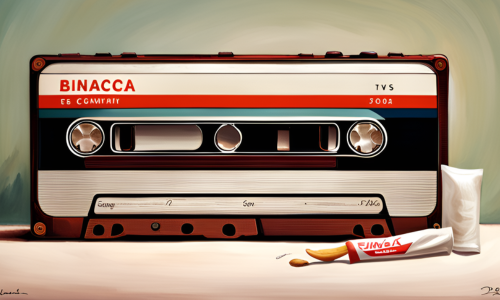Back in the 1960s and 70s, when the voice of Ameen Sayani playfully boomed on the radio with ‘Behno aur bhaiyon…’ it meant only one thing – that it was time for Binaca Geetmala! Every Wednesday, people tuned in on their Murphy radio, and just like that Binaca became the brand that brought toothpaste and music together (who would have thought of that combination right?). It was a time when sponsored radio shows made their debut and brands started to associate themselves to the community through it. Vividh Bharti began doing sponsored programs of which I distinctly remember three – Hawa Mahal, Modi ke matwale rahi and of course Binaca Geetmala. These were the pioneers of storytelling, engaging directly with the community, something that marketers struggle with today.
The story of Binaca – be it the rise and popularity or the unexplored potential – make it a great contender for a brand throwback. The oral hygiene brand was launched in 1951 by FMCG giant Reckitt Benckiser and by the 1970s it was among India’s favourite toothpaste. But Binaca became more than just a toothpaste, all thanks to the power of an iconic sponsorship idea. Today, those like me who grew up in the 1970s remember Binaca not for the flavour but for the music! In fact, even today Saregama Carvaan, a digital audio player, is being sold with priceless collection of Binaca Geetmala.
A Brand Marketing Success
The sponsorship of the 30-minute radio show made Binaca a brand name of the times, almost synonymous with music. Everyone waited for Binaca Geetmala to listen to and kept up with the reigning hits. It was the first show on Indian radio that brought a countdown of Bollywood songs and being number one on the Binaca list was like an Oscar for the song. Presented by legendary Ameen Sayani, his mesmerizing voice kept the show enchanting for 4 decades. The weekly music countdown was broadcast on Radio Ceylon from 1952–1989 and on AIR’s Vividh Bharati from 1989–1994. The show aired not just in India, but also in other South Asian countries and parts of the Middle East, East Asia, and Europe.
The brand Binaca became successful due to its brilliant marketing strategy. Apart from the iconic sponsorship of Geetmala, the brand won over children by giving a tiny animal toy figure in every Binaca packet. Now remember this was much before the era of tazos and happy meals. Children used to open the toothpaste packet in anticipation of which animal they will add to their collection – a lion, elephant or camel! Friends even exchanged duplicates to complete their collection.
The brand realised that children also form an important target audience, they introduced a free ‘water picture’ sticker. Ahead of its time yet again, Binaca toothpaste came with a little piece of paper with a hidden picture, a time when stickers or self-adhesive tapes had not entered the market. You had to soak it in water and then stick it while wet to a glass surface. Then the protective layer would be peeled off, on most occasions with the help of an adult, to ensure the picture doesn’t get damaged. What wonderful ideas to keep consumers coming back for more!

The Downfall
While Binaca became a household name thanks to Geetmala, the popularity of the toothpaste started to fall by late 1980s and faded to near oblivion in the subsequent decade. In the late ‘80s, there was an anomalous situation about Binaca becoming Cibaca following the sale of the consumer products division of CIBA-Geigy of Switzerland to the English firm Reckitt and Colman. However, India and Pakistan were left out of the deal, thus creating ambiguity.
In 1996, Dabur bought Binaca from Reckitt Benckiser for a throwaway price of around Rs 1 crore, hoping to revive the brand. The company initially launched a toothpowder under the brand but unfortunately had to withdraw it due to discouraging sales. In 2002 Dabur appointed PricewaterhouseCoopers to sell the brand Binaca, but failed to sell it at the expected valuation. Dabur still owns the brand Binaca, but they don’t sell any product under it.
The downfall of Binaca is a tragic loss given the brand had such great potential. It seems odd that after buying the brand, Dabur so easily gave up on reviving it and wanted to sell it instead. Given the connect with music, there was so much that could have been done. In the late 1990s and early 2000s, TV singing reality shows such as Sa Re Ga Ma Pa and Antakshari became popular and Binaca would have been a natural match. Or better still, something like a Coke Studio could have been created keeping in line with how the brand had been a pioneer in marketing. I wonder why a brand, that still has such great recall, was not used to launch a new product or why no attempt was made at brand transformation to leverage its popularity. Truly a great opportunity lost and a brand forgotten.
Makes one wonder what would have happened had the brand value been channelised? We might have had a Binaca Geetmala YouTube channel or even a music label, who knows! Despite how the brand suddenly disappeared, the name Binaca still stirs nostalgic memories and takes you back to the days when radio was king and being on top of Geetmala was all that mattered! For now, we can feed nostalgia with this Sportify playlist:




